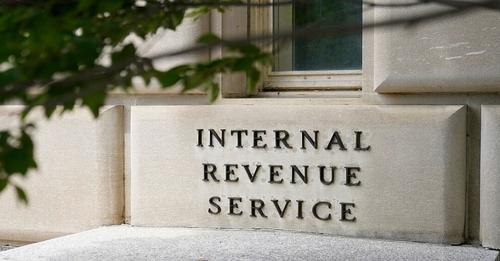Electronic tax-return filing has made things more complex, not less. And better computers could mean worse abuses.
Written By: Jay Starkman
Published: March 7, 2023 1:10 pm ET
The Internal Revenue Service is beginning to spend the $80 billion and hire the 87,000 people last year’s Inflation Reduction Act allocated. One premise of the legislation is that better technology will streamline operations: “Americans rightfully expect a more modern and high-performing IRS,” as Daniel Werfel said at his Feb. 15 confirmation hearing to become the agency’s commissioner.
But the IRS has managed to use digitization to make life more difficult for taxpayers. Given the influx of money and agents over the next decade, expect the worst. The IRS will focus less on service than compliance, enlisting AI-assisted computing power to become ever more intrusive.
Expectations have been low for decades. A February Government Accountability Office report found that some of the agency’s information-technology systems are so old, it is hard to find employees who know how to use them. The IRS has long told Congress that its obsolete systems need an upgrade. “You all have made a very convincing case that the information technology at the IRS is from the Dark Ages,” Senate Finance Committee Chairman Ron Wyden told Commissioner Charles Rettig in March 2021.
While the agency has the latest computer hardware, it has failed to manage and modernize its software. Every taxpayer is listed in the IRS’s 60-year-old database called the Individual Master File. It is based on Cobol, a programming language that had its heyday in the 1960s. More-recent applications are in modern languages such as Java and Python. As tax laws grew in complexity over the years, the IRS created more than 500 systems, including 60 separate major databases containing different pieces of taxpayer information.
This patchwork quilt of data means IRS employees lack easy access to a taxpayer’s complete record. But ever since Congress allocated significant funds for an IT overhaul in 1988, the agency has wasted billions of dollars attempting to replace the Master File. The Government Accountability Office estimates doing so will take longer than the 2030 target date.
The IRS says upgrading its systems will improve customer service and compliance. GAO writes that the agency’s artificial-intelligence and machine-learning initiatives will “create predictive models and algorithms to analyze data more efficiently”—in other words, to increase the rates of compliance.
In July 2019, after minimal public discussion, the IRS amended its mission statement to emphasize compliance, adding: “In the United States, the Congress passes tax laws and requires taxpayers to comply. The taxpayer’s role is to understand and meet their tax obligations. The IRS’s role is to help compliant taxpayers understand the tax law, while ensuring that the minority who are unwilling to comply pay their fair share of taxes.” The 1987 IRS mission statement said taxpayers should pay “the proper amount.”
There’s a reason the IRS’s computers are out of date. Following Watergate revelations of IRS abuse, Congress became fearful of a tax agency with advanced computers that could be turned into an instrument of oppression. The Carter administration killed a major IRS computer upgrade in 1978, approving only a scaled-back program.
Congress has forgotten the post-Watergate fear of a too-computerized tax agency. Despite its often-clunky IT, the IRS is consolidating power, thanks to ever more complex tax forms and laws, mandated electronic filing, and extended or suspended statutes of limitation on pursuing violators.
More than 95% of taxpayers now file electronically, reducing the blizzard of paperwork. Yet the IRS still hasn’t been able to keep up. During the early ’90s, the agency smoothly processed 100 million paper 1040s annually. Today, it manages fewer than nine million paper returns a year.
Electronic filing has allowed the IRS to make things more complex, not less. The agency’s website lists more than 2,700 different forms. With e-filing, the two-page paper Form 1040 expanded to eight pages. Many businesses set up as partnerships or S corporations are required to attach new 15- to 20-page schedules to each K-1 detailing foreign taxes. Failure to do so could mean running afoul of penalties with no statute of limitations. The IRS receives about 30 million partnership K-1s a year but makes no systematic use of this data absent an audit. Only 140 partnerships were audited in 2018, the most recent year of data available.
Demanding so much detail makes tax preparation more expensive. After a public outcry, the IRS shelved a proposal that would require banks to file a Form 1099 electronically for transactions exceeding $600 but will require reporting third-party payments over $600.
For every perceived discrepancy in a tax return, the IRS’s computers generate a notice and add penalties. In 1954 the Internal Revenue Code had only 12 civil penalties. This grew to 25 in 1967 and 150 in 1987. Today, there are hundreds of penalties—only the IRS computers seem to know the precise figure.
In 2018 the IRS issued more than 175 million notices to taxpayers about their returns. In 2022 it issued 17 million “math error” notices—most for returns filed electronically. Many taxpayers opt to pay the assessments and not challenge them, even when they are issued in error. As a CPA, I reply to every notice my clients receive. In my experience, two-thirds are wrong.
With billions of dollars more funding and tens of thousands of more employees—not to mention daunting computer power—things are likely to get more intrusive.
Mr. Starkman is a certified public accountant in Atlanta and author of “The Sex of a Hippopotamus: A Unique History of Taxes and Accounting.”

